Raise a Wee Dram to Islay, Scotland’s Whisky Island
Located on Scotland’s whisky coast, Islay is renowned for its single malts and is home to as many as nine distilleries, including top brands like Laphroaig, Bruichladdich, Bowmore, Caol Ila, and Lagavulin.
Whisky? Oh no, not for me!
I preferred the many full-bodied wines and the classic G&Ts.
That’s what I thought.
Until I planned a trip for my whisky-loving husband to the Isle of Islay, and ran smack-dab into the best of Scottish single malts.
If Scotland wears the crown when it comes to whiskies, Islay is the sparkling Kohinoor that sits atop it.
The Queen of the Hebrides, Islay is the fifth largest island in Scotland and is located on the western ‘whisky coast’. Situated in Argyl, about 40 kilometres north of the Irish coast, the stunning island is best known for its peaty, smoky whiskies.
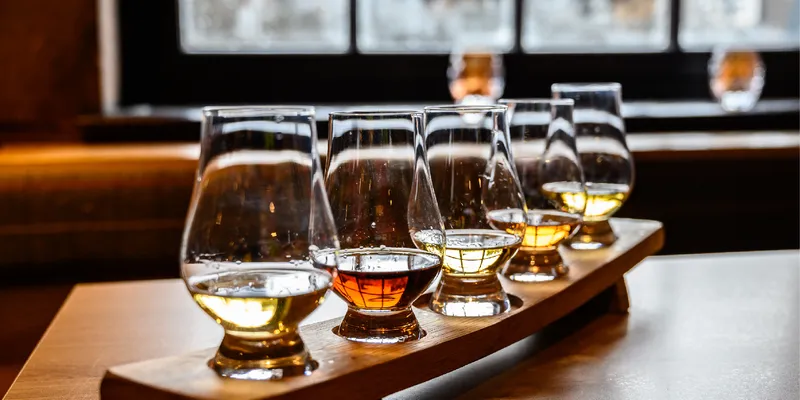
Aficionados believe they are incomparable, and they do have a lot of inter-island comparing to do! For the small isle–spread over about 240 square miles and with a striking coastline of 130 miles–is home to as many as nine distilleries, including top brands like Laphroaig, Bruichladdich, Bowmore, Caol Ila, and Lagavulin.
The samplings and the tastings mean no one leaves Islay without falling in love with at least one of the single malts!
According to local lore, the process of whisky distillation on Islay began in the early 14th century, courtesy Irish monks.
The island–rich in peat and soft water lochs and rivers–was the ideal place to make whisky. Crofters got down to the business, growing bere, a six-row barley that was the forerunner of the currently grown grain, and distilling the extra. Over time, they made Islay the heart of single malt.
But let’s get to the crux of things. What is a single malt? It’s whisky that has been produced in one distillery as against a pure malt, which is a mixture of malt whiskies from several distilleries.
The UK’s Scotch Whisky Regulations mandate that a single malt scotch whisky must be made exclusively from malted barley, be distilled using pot stills at a single distillery, and must be aged for at least three years in oak casks of a capacity not exceeding 700 litres.
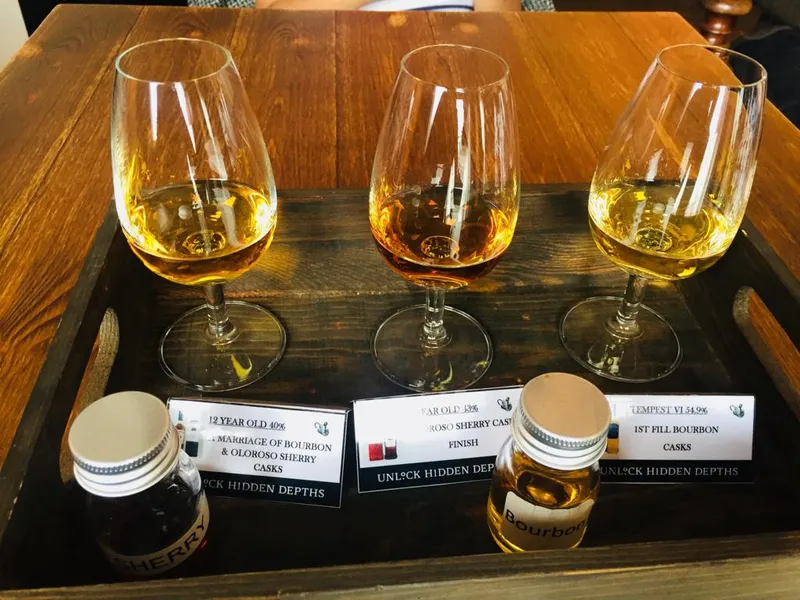
The stunning island of Islay is best known for its peaty, smoky whiskies, and is home to nine working distilleries.
The simplest explainer for whisky production on Islay would be: barley is malted, crushed, made into a beer and boiled, and then spends years on end in an oak barrel to mature.
What determines the characteristics and taste of the whisky you throw back? The atmospheric conditions, water, shape of the still, and aging barrels are the factors that come into play.
The fact that a large part of Islay is compact black banks of peat, created by the numerous drying layers of sphagnum mosses and other vegetation, helps create the perfect foundation. The peat is saturated by salt spray, and then dried by the briny breeze.
That’s why when you sip an Islay whisky, regardless of the distillery it comes from, the flavours of the sea, salt, and peat come through.
According to the Scotch Whisky Association, Scotch exports hit a record £4.9 billion in 2019, roughly doubling over the preceding decade.
Scotland’s most famous whisky island has a range of distillery and whisky tours to offer. YS Life offers a quick roundup to let you choose which ones you should put on your to-do list.
Ardbeg
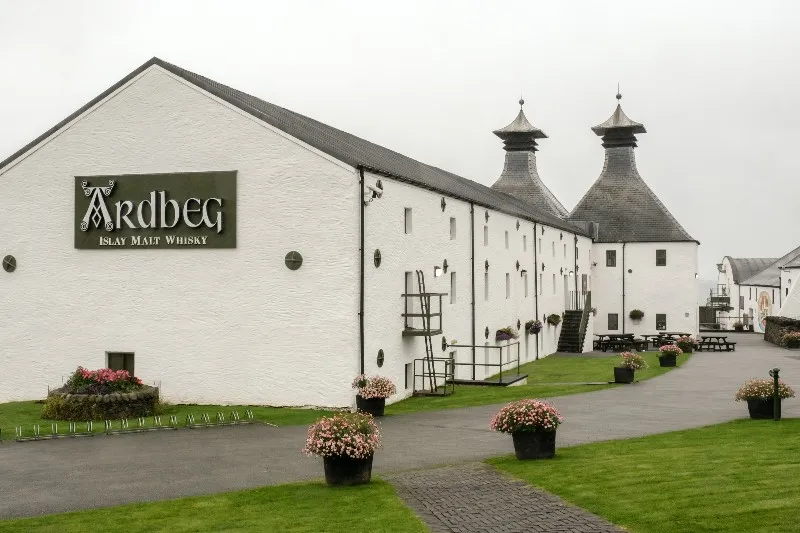
Ardbeg, an iconic 200-year-old distillery, was run by the McDougall family until 1959 and is currently owned by Moet Hennessy.
It’s known for producing the most peaty whisky of them all (on Islay, that is), and its brands are said to be “as close to perfection as makes no difference”. The main aromas are not briny and salty; they’re spicy, malty, or sweetish tones like vanilla and chocolate.
Bowmore
Islay’s oldest legal distillery was established in 1779 and is sited on the shores of Loch Indaal. It was closed during World War II to serve as quarters to the RAF Costal Command. One of the few distilleries with malting floors, Bowmore produces about two million litres of alcohol per year. The whisky that you pour out is all that Islay stands for – salt, seaweed, and peat.
Bruichladdich
Built in 1881 by brothers Robert, William, and John Gourlay Harvey on the shore of Loch Indaal, the distillery’s tall, narrow stills create an elegant, floral, and fruity house style. The distillery is known for its three distinct single malts: Bruichladdich (unpeated), Port Charlotte (heavily peated), and Octomore (super heavily peated; considered to be “the most heavily peated single malt whisky in the world”). It also makes the popular Botanist gin.
Ardnahoe
Launched by a man who came to work at the Bruichladdich Distillery where he learnt the fine art of distillation, the youngest distillery on the island–it was only founded in 2018–is old-fashioned in its operations and processes. It produces the kind of whisky that Islay is renowned for–smoky, full-bodied, and vibrant.
Bunnahabhain
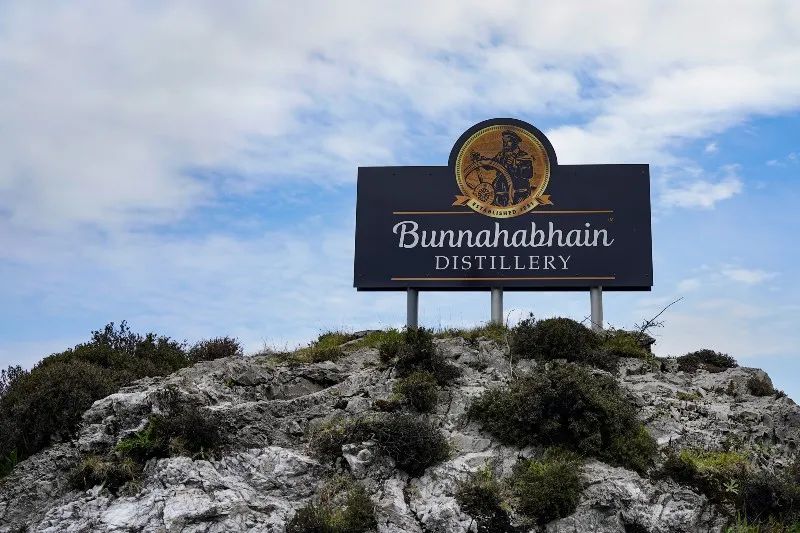
Pronounced 'Bunn-na-ha-venn', which translates to 'mouth of the river' in Scots Gaelic, this is the most remote distillery on the island. Nestled in Bunnahabhain Bay on the shores of the Sound of Islay, this is said to be the only distillery on the island that uses pure spring water. Unlike other brands, the core range is known for its milder, lighter, and unpeated flavour profile.
Caol Ila
Caol Ila, the largest distillery on Islay, has produced whisky almost consistently since it was founded in 1846–barring a brief closure during WWII due to regulations placed on the use of barley. Also located on the Sound of Islay, it makes one of the lighter whiskies on the island, combining unique peppery and floral notes with the which complement the traditional peaty flavour.
Kilchoman
One of the smallest distilleries in Scotland, Kilchoman began production only in 2005. The farm distillery stands out from its Islay counterparts on account of the fact that all parts of the whisky-making process (growing barley, malting, distilling, maturing and bottling) are completed on Islay. This distillery is a craft producer, focusing more on process than output, and marries peat smoke flavours with floral sweetness.
Laphroaig
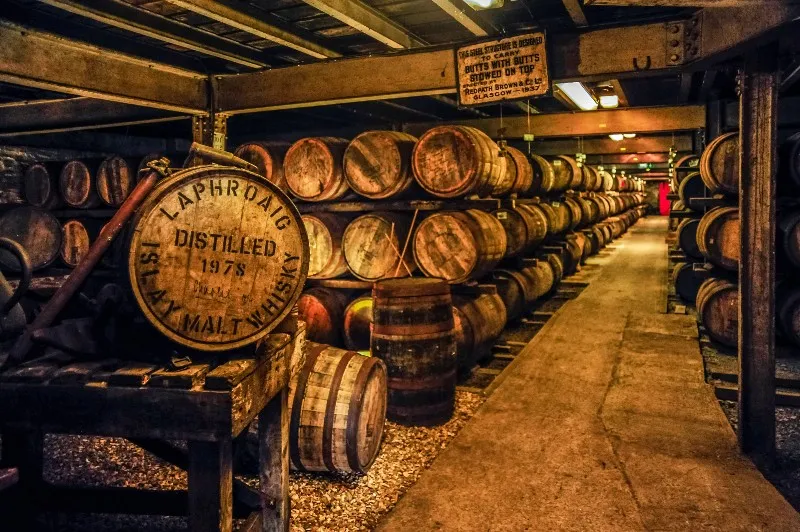
Little did Donald and Alexander Johnston know when they founded their distillery on the island’s south coast in the ‘broad hollow by the bay’ in 1815 that their whisky would go on to become the favourite of King Charles III.
Since then, the distillery has churned out billions of the classic dram, with each sip feeling like an invigorating day on Scotland’s craggy coast - smoky, salty, seaweedy, and peaty! Interestingly, Laphroaig is consistently the highest selling whisky on Islay.
Lagavulin
Snuggled in a small, scenic bay between Ardbeg and Laphroaig, Lagavulin is one of the oldest distilleries in Scotland. It officially goes back to 1816, but records suggest illicit distillation was happening on site way back in 1742. Currently owned by Diageo, the Lagavulin distillery sources water from the Lochan Sholum through the peat, which gives its whisky the intensely flavoured, smoky, and rich taste it’s known for.
Islay also has three lost distilleries: Ardenistiel, Daill, and Ardmore (no connection to the Highland distillery of the same name). Two new distilleries are likely to open in the next few years, so there’s much more whisky to be sipped and sampled.
In the last week of May, the Island plays host to the Islay Festival of Malt and Music, a 10-day event that “celebrates the island, her culture, and her spirit” and defines the whisky calendar.

Islay is inhabited by about 3,000 people, and the main commercial activities are agriculture, whisky distillation, and tourism.
But there’s a lot more to Islay than alcohol: dramatic coastal landscapes, scenic walks, wonderful beaches, abundant birdlife, and fresh seafood.
Last but not the least is the Islay Woollen Mill, which is run by Gordon and Sheila Covell and produces a wonderful range of tartan fabrics. The mill’s designs were featured in Mel Gibson’s Braveheart, Tom Hanks’ Forrest Gump, and Liam Neeson’s Rob Roy.
Edited by Megha Reddy







